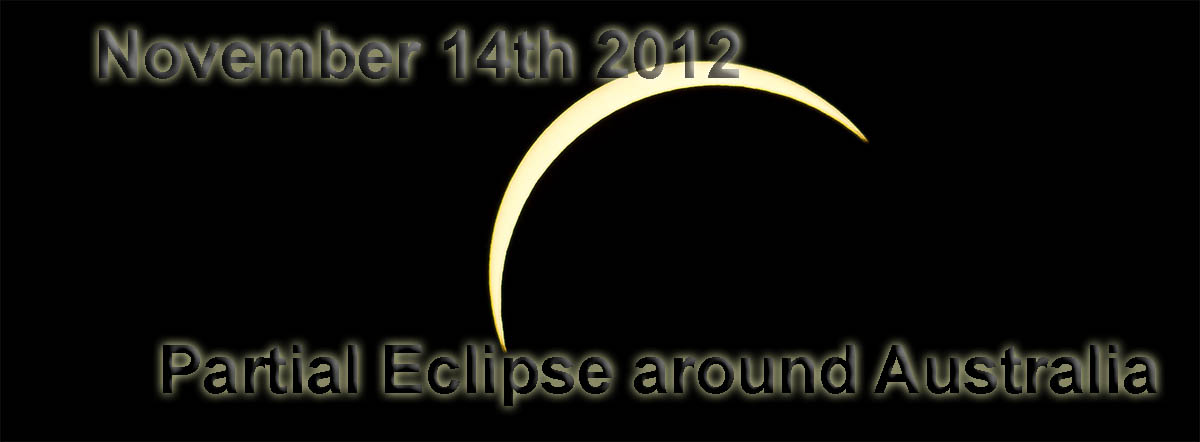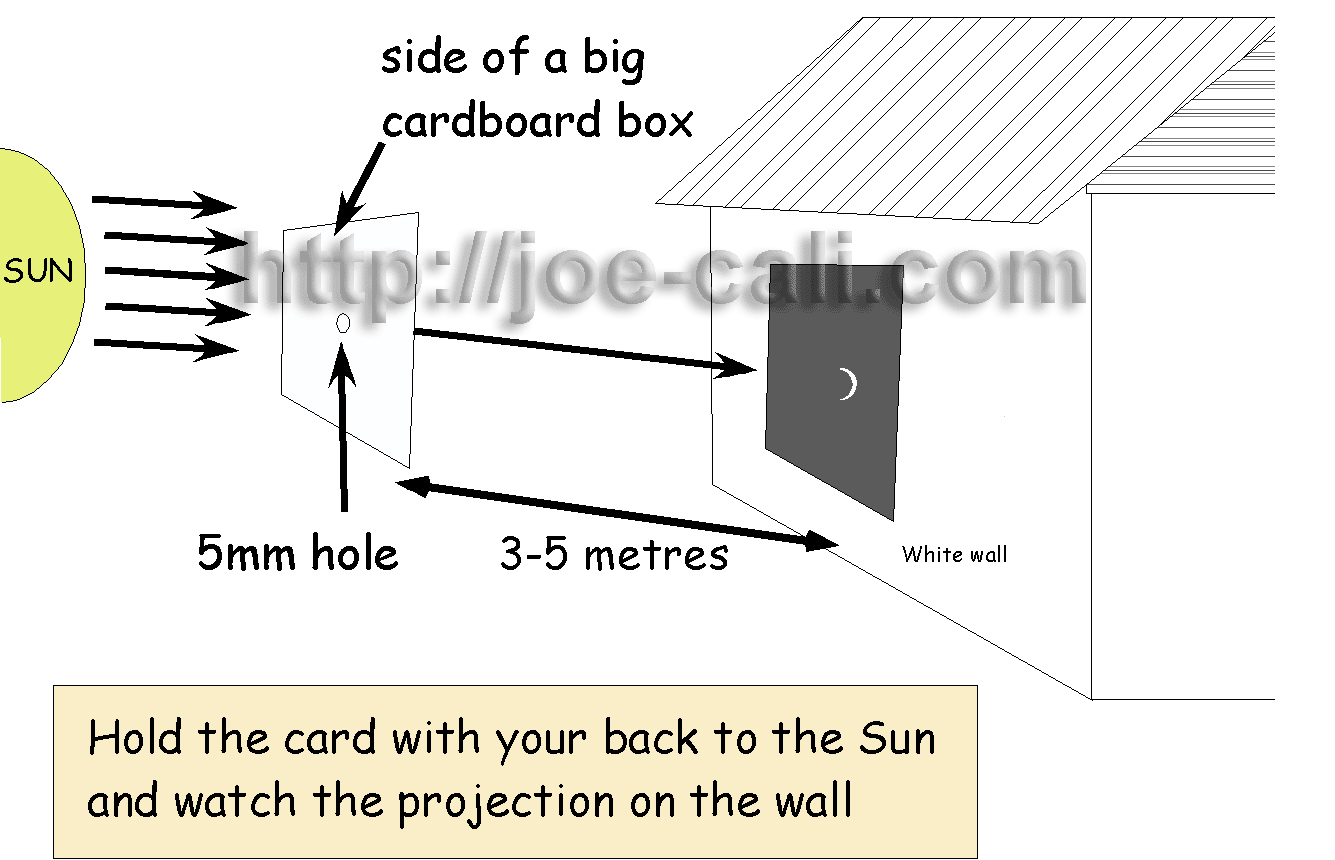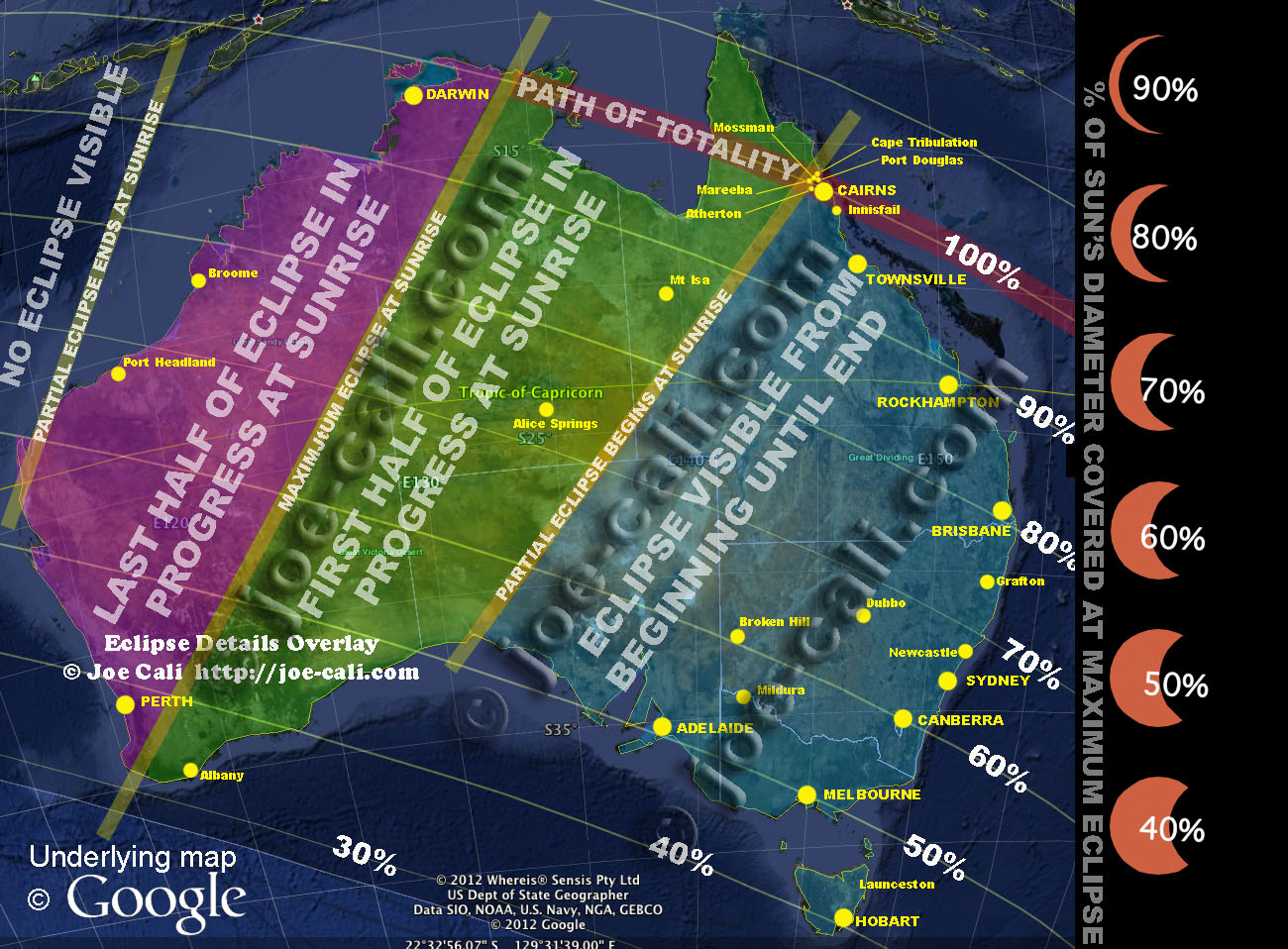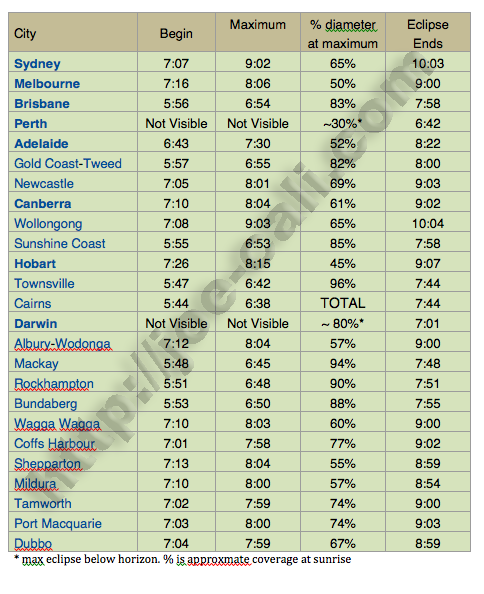WAITING FOR THE
SHADOW
SOLAR AND LUNAR ECLIPSE OBSERVING |
|
|
|
|
|
|
|
|
|

What will the partial eclipse look like from your town or city?
There are two technical terms used to describe or measure eclipse coverage, magnitude and obscuration.
Obscuration is the percentage of the Sun's area covered by the Moon.
Eclipse magnitude is the percentage or proportion of the Sun's diameter covered by the Moon.
I believe magnitude or diametric coverage is easier for most people to visualize and this is the measure I have used throughout this page. Other web sites or the media may quote one or the other and won't identify which measure is being used so this may mean you see different numbers. The coverage is the same, it's only the method used to describe it that changes.
How to protect your eyes during the partial eclipse?
During the partial eclipses both before and after totality, you must use special techniques to protect your eyes. Looking at the Sun at anytime during an eclipse or even on a normal day can burn the retina causing permanent eye damage which can't be repaired. The Sun is no more dangerous during a partial eclipse than it is on any other day. On a normal day, if you glance at the Sun or get the Sun in your eyes for example while you are driving, you don't go blind. But you don't stare at the Sun. During the eclipse, you don't have to protect your eyes from glancing contact with the Sun any more than you do on a normal day. The problem is that during the eclipse, there is a temptation to stare at the eclipse for extended periods especially as the Sun gets covered. Staring can cause burns on the retina leading to permanent blind spots.
Using found materials from around the home as defacto solar filters is very dangerous. These materials don't filter the dangerous UV and IR rays and can lead to blind spots even though the image looks dark enough to the eye. Examples of unsuitable filters include pinholes, photographic film negatives, cd's/DVD's, smoked glass and silvered confectionary wrappers among many others. There are no materials found around the home that will safely filter the Sun's high intensity light. Some of these materials might look similar to solar filters but they are definitely not safe. The best policy is to assume that if it hasn't been made for the purpose, it isn't safe.
There are two accepted safe methods for watching a partial eclipse. One is to look through some sort of specially made filter material, the other is to use some sort of projection method.
Filters
Eclipse shades are special cardboard frame sunglasses with properly
made solar filters built-in. Away from the Cairns area you will need to
mail order from a retailer like Starfield 7(see ad below) or buy in
person from any reputable astronomical equipment retailers. These are
the most convenient filtration method. Do read the instructions. Some
of these shades are not rated for continuous viewing but for viewing 30
seconds at a time. A pair of eclipse shades will probably cost less
than $10.00. These cardboard glasses use special filter materials that
effectively cut all wavelengths of light including the dangerous IR and
UV that defacto materials pass to your eyes. Your eyesight is
definitely worth the investment. Other suitable filters are a number 14
arc welding filter available from welding suppliers or a special solar
filters available from astronomical suppliers designed to be attached
to telescopes or binoculars.

Visit Starfield 7's Ebay store or send an enquiry email to starfield7@gmail.com
The oldest safe method is the projection method. Cut the side out of a large cardboard box. Punch a 5mm hole in the side.

The Sun will be rising as the eclipse begins. Stand about 3-5m away from the east wall of a white walled building. With your back to the Sun hold the card up so that its shadow falls on the wall. In the middle you will see a small image of the partially eclipsed Sun.
A flat mirror can be used to project the image in the same way. Cover the mirror with a circular mask. Project the image at least 200 times the diameter of the mask.
The total eclipse is only visible from within the shaded area shown in the map labelled path of totality. It touches down in Arnhem Land near Oenpilli and heads across the gulf. It passes over Edward River on the west coast of Cape York. The only populated areas that see the total eclipse is the Cairns coast from Innisfail to just south of Cooktown and a dozen samll towns in the Atherton Tableland. Outside this narrow strip, the rest of Australia will see a partial eclipse.
All of Australia will see a partial eclipse of varying amount. The map below shows the magnitude of eclipse seen across the continent.

Map source : ©Google Earth Eclipse circumstance overlay created by Joe Cali
The curved lines running roughly east west show what percentage of the Sun's diameter is covered at maximum eclipse in your city. The colour zones indicate how much of the eclipse is visible. Illustrations down the right side illustrate how each 10% magnitude step will appear.
Because this eclipse occurs early in the day sunrise interferes with the view in parts of the country. West of the "PARTIAL ECLIPSE BEGINS AT SUNRISE" line the eclipse is visible and in progress at sunrise. I have colour coded the continent into three zones for eclipse visibility.
Blue Zone : All eclipse is visible. You will see first contact between the Moon and Sun, maximum eclipse indicated and last contact
Green Zone : The eclipse will be in progress at sunrise. You will see the partially eclipsed sun rise over the horizon and the eclipse progress to the maximum eclipse indicated.
Purple Zone : The eclipse will have already passed maximum eclipse by the time the sun rises. You will only see the last part of the eclipse. You won't see the maximum eclipse indicated by the line, the maximum eclipse you will see will whatever the coverage is as the sun rises.
The table below shows specific times for towns and cities outside the total eclipse path.
